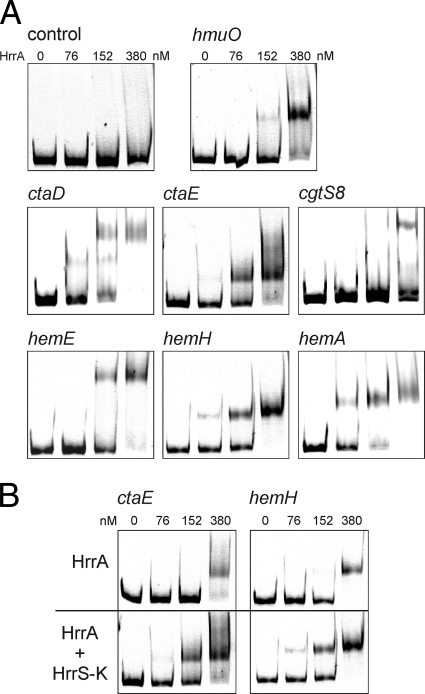FIG. 3.
Identification of direct target genes of HrrA in C. glutamicum. (A) DNA fragments (500 bp) covering the promoter region of hmuO, ctaE, cgtS8, hemE, hemH, and hemA were incubated without or with a 5, 10, and 25 molar excess of (partially) phosphorylated HrrA protein (0 to 380 nM), as described in Materials and Methods. After incubation, samples were separated on a 10% nondenaturating polyacrylamide gel and stained with Sybr green I. DNA fragments covering the promoter region of cytP or pck served as a negative control. (B) DNA fragments containing the promoter region of a gene postulated to be activated by HrrA (ctaE) and one repressed by HrrA (hemH) were incubated with equal amounts of unphosphorylated HrrA (upper gels) or HrrA that had been phosphorylated by preincubation with MBP-HrrSΔ1-248 (HrrS-K) and ATP. These examples clearly demonstrate increased binding affinity of the phosphorylated response regulator to its target promoters.

